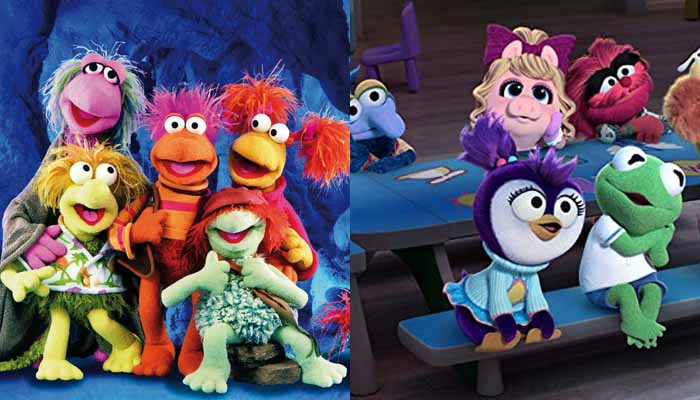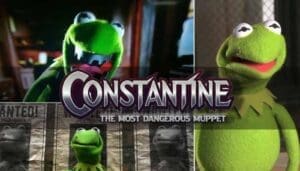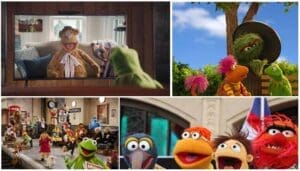The Muppets, those beloved denizens of felt and foam, have captivated audiences for generations with their unique blend of humor, heart, and often, utter chaos. While their origins trace back to the mid-20th century, the 1980s marked a particularly vibrant and significant chapter in their history. This decade saw the Muppet universe expand in exciting new directions, solidifying their status as cultural icons and leaving an indelible mark on popular entertainment. From groundbreaking television series to memorable movies and a plethora of merchandise, the Muppets in the 80s were a force to be reckoned with, bringing joy and laughter to millions around the globe.
The Height of Hilarity: Muppet Mania in the 80s
While many fondly remember “The Muppet Show” era (1976-1981) as the zenith of Muppet popularity, the 1980s witnessed a fascinating continuation and diversification of their cultural impact. The sheer global reach established by “The Muppet Show,” which at its peak in 1978 drew an astounding 235 million viewers across over 100 countries, provided a robust foundation for the new ventures that defined the Muppets in the subsequent decade. This pre-existing global recognition allowed for greater experimentation and the exploration of different formats, ensuring the Muppets remained firmly embedded in the popular consciousness.
The collaborative spirit fostered within Jim Henson’s team played a crucial role in the Muppets’ continued success and cultural resonance. The extreme level of “psychological safety” present in the team, as highlighted in “Muppet Guys Talking,” allowed for innovative thinking and radical creativity, which translated directly into the playful and engaging content that audiences adored. This environment of fun and collaboration not only shaped the on-screen antics but also instilled important values in viewers, particularly children, teaching them about diversity, inclusivity, love, compassion, and the simple joy of playfulness. Beyond these direct lessons, “The Muppet Show” itself was a “celebration of culture,” a space where people could set aside everyday burdens and political strife to share laughter and song with a group of uniquely different yet harmonious individuals. These characters, crafted from fur and felt in a spectrum of colors, transcended traditional notions of race and ethnicity, becoming “iconic, essentialized beings” that resonated with a broad audience. For many, especially those seeking an escape from the pressures of conformity, the Muppets offered a vehicle for release and a sense of belonging.
Television Treasures: Fraggle Rock and Muppet Babies Take Center Stage

The 1980s saw the arrival of two landmark Muppet television series that captured the imaginations of a new generation: “Fraggle Rock” and “Muppet Babies.”
Fraggle Rock: Premiering in 1983 and running until 1987, “Fraggle Rock” transported viewers to an intricate underground world inhabited by interconnected societies of whimsical creatures. The series primarily followed the adventures of five distinct Fraggles – Gobo, Mokey, Wembley, Boober, and Red – as they navigated their relationships with the industrious Doozers and the towering Gorgs, with a whimsical connection to the human world (“Outer Space”) through the inventor Doc and his dog Sprocket. While ostensibly a children’s show, “Fraggle Rock” proved to be accessible and engaging for audiences of all ages. A YouGov poll indicated a high level of fame (71%) and popularity (41%) for the show, further highlighting its widespread appeal. Its broadcast and dubbing in an impressive 95 countries underscores its international success.
Beyond its entertainment value, “Fraggle Rock” cleverly used its fantastical setting as an allegory to explore complex and relevant issues such as social conflict, prejudice, personal identity, the environment, and social harmony. The show emphasized the interdependence of different groups and the importance of communication and understanding despite vast differences. Music was an integral part of the “Fraggle Rock” experience, with each episode featuring original songs that often reinforced the show’s themes. The catchy theme song even achieved mainstream success, reaching number 33 on the British charts in 1984. Several notable specials further enriched the “Fraggle Rock” universe, including “A Muppet Family Christmas,” “Fraggles Look for Jobs,” and “The Bells of Fraggle Rock”. The remastered debut of “The Bells of Fraggle Rock” on ABC Family in 2015 speaks to the enduring affection for the series. Jim Henson intentionally designed “Fraggle Rock” with an international market in mind, drawing upon his experiences with adapting “Sesame Street” for different cultures. The show’s focus on universal themes, combined with its memorable characters and engaging music, allowed it to resonate with audiences across the globe.
Muppet Babies: Premiering in 1984 and running until 1991, “Muppet Babies” offered a delightful reimagining of beloved Muppet characters as imaginative toddlers living together in a nursery under the care of the unseen Nanny. The show’s premise centered on the power of imagination and creative problem-solving, as the babies’ playtime seamlessly transitioned into elaborate fantasy sequences inspired by their surroundings. Primarily targeting children aged 2-5, “Muppet Babies” quickly became a favorite among viewers of all ages. The show garnered universal acclaim for its innovative animation, vibrant visuals, clever writing, engaging humor, and underlying educational values. Its popularity was further cemented by winning seven Daytime Emmy Awards, including four consecutive awards for Outstanding Animated Program. The show’s enduring appeal kept it on American television for a full decade.
“Muppet Babies” explored themes of friendship, kindness, and self-esteem, all while celebrating the boundless potential of a child’s imagination. Several notable specials were produced, including “Gonzo’s Video Show” and the brief expansion into “Muppets, Babies, and Monsters,” which featured the short-lived “Little Muppet Monsters” segment. The baby Muppets also made a memorable appearance in the television special “A Muppet Family Christmas”. The concept for “Muppet Babies” originated from a charming dream sequence in “The Muppets Take Manhattan,” where Miss Piggy imagined meeting Kermit as children. This inherent familiarity with the characters, coupled with the universally relatable theme of childhood imagination, contributed significantly to the show’s immediate success. The high production quality and witty writing further solidified its place as a beloved animated series.
Muppets on the Silver Screen: Adventures in Movie Magic
The 1980s also saw the release of two delightful Muppet movies that continued their cinematic adventures: The Great Muppet Caper (1981) and The Muppets Take Manhattan (1984).
The Great Muppet Caper (1981): This cinematic caper followed Kermit, Fozzie, and Gonzo as investigative reporters who travel to London to solve a jewel heist. The film received mixed reviews from critics, holding a 78% approval rating on Rotten Tomatoes. The critical consensus noted that while the plot might be somewhat uneven, the undeniable charm of the Muppets made it thoroughly watchable. On Metacritic, the film garnered a score of 70, indicating generally favorable reviews. Some critics felt the film relied too heavily on a formulaic caper plot and lacked the cutting edge of previous Muppet productions. However, others, like Gene Siskel of the Chicago Tribune, particularly praised Miss Piggy’s star quality.
Commercially, The Great Muppet Caper grossed $31.2 million in the United States. While this was a respectable figure, it didn’t reach the same level of box office success as its predecessor, The Muppet Movie, earning approximately half the amount. Despite this, it remains the fifth-highest-grossing Muppet film to date. While perhaps not as commercially dominant as its forerunner, The Great Muppet Caper continues to be cherished by fans for its signature Muppet humor and the enduring appeal of its characters.
The Muppets Take Manhattan (1984): This film marked Frank Oz’s solo directorial debut and followed the Muppets’ ambitious journey to bring their musical production to Broadway. The movie was met with mostly positive reviews, achieving an 85% approval rating on Rotten Tomatoes. Critics lauded the film’s puppetry, humor, songs, and the endearing nature of the characters. On Metacritic, it received a score of 64, also indicating generally favorable reviews.
At the box office, The Muppets Take Manhattan was a success, grossing $25.5 million on a budget of $8 million. It was the second highest-grossing G-rated film of 1984. Notably, the film featured a popular “Muppet Babies” sequence that resonated strongly with audiences, foreshadowing the success of the animated series that would follow later that year. The Muppets Take Manhattan not only solidified Frank Oz’s directorial talents but also further cemented the Muppets’ enduring popularity and their ability to connect with audiences through both heartwarming stories and comedic adventures.
| Movie Title | Release Year | Critical Reception (Rotten Tomatoes) | Commercial Reception (US Box Office) |
|---|---|---|---|
| The Great Muppet Caper | 1981 | 78% | $31.2 Million |
| The Muppets Take Manhattan | 1984 | 85% | $25.5 Million |
Growing Up Muppet Style: Character Development in the Decade
The 1980s were a dynamic period for Muppet characters, with both established favorites undergoing evolution and a host of new personalities being introduced. Over time, characters like Gonzo and Miss Piggy demonstrated significant development. Piggy, for instance, transitioned from a more background presence to the iconic diva figure that audiences know and love. Kermit also matured into a more nurturing leader, viewing the Muppets as a close-knit family. The growing confidence of the puppeteers and the introduction of new performers who brought their own interpretations to the roles also contributed to this character evolution.
The decade also saw the creation of entirely new casts of characters in series like “Fraggle Rock,” which introduced the memorable Fraggles, Doozers, and Gorgs. “Muppet Babies” offered charming toddler versions of classic Muppets such as Kermit, Piggy, Gonzo, Fozzie, Animal, Scooter, and Rowlf, alongside the exclusively created character of Scooter’s twin sister, Skeeter, and the nurturing presence of Nanny. Even within the long-running “Sesame Street,” the 1980s marked the rise of Elmo, who would eventually become one of the show’s most beloved and recognizable characters. Rizzo the Rat also gained prominence during the early part of the decade , and Yolanda Rat made her debut in The Muppets Take Manhattan. This expansion of the Muppet character universe across various platforms enriched the franchise and broadened its appeal to different audiences.
More Than Just Fun and Games: Themes, Education, and the Power of Song
Muppet productions in the 1980s were characterized by a skillful blend of entertainment with meaningful themes and often subtle educational elements, all enhanced by the power of music. Recurring themes across various Muppet shows and movies included the importance of friendship, cooperation, inclusivity, and celebrating individual differences. “Fraggle Rock” specifically tackled more complex social issues like conflict, prejudice, personal identity, and environmental awareness, presenting them in an accessible way for younger viewers. “Muppet Babies” placed a strong emphasis on the power of imagination and the development of creative problem-solving skills.
“Sesame Street” continued its pioneering work in educational television, focusing on both cognitive goals like literacy and numeracy and affective goals such as social competence and tolerance of diversity. The show also addressed sensitive real-life issues like grief and adoption with sensitivity and care. “Muppet Babies” was also recognized for its educational value, subtly encouraging creativity and positive social interactions. Music played a vital role in many Muppet productions throughout the decade, most notably in “The Muppet Show” and “Fraggle Rock,” where original songs often drove the narrative and reinforced key messages. Muppet movies also featured memorable soundtracks that contributed significantly to their overall charm and impact. Jim Henson firmly believed in the power of entertainment to educate and inspire, a philosophy that was clearly evident in the thoughtful and enriching content produced by the Muppets in the 1980s.
Jim Henson’s Vision: Guiding the Muppet Magic
The creative genius of Jim Henson was the undeniable driving force behind the Muppets’ remarkable success throughout the 1980s. His initial ambition to create a variety show for the Muppets culminated in “The Muppet Show” in the late 1970s, which laid a crucial foundation for the franchise’s expansion in the following decade. Henson’s desire to explore storytelling beyond the variety show format led to the creation of beloved Muppet movies and innovative television series like “Fraggle Rock”. He specifically envisioned “Fraggle Rock” as a children’s program with international appeal, drawing on his understanding of global audiences. Henson’s revolutionary approach to puppetry for television dynamically engaged viewers with his characters in unprecedented ways.
The 1980s also saw Henson venture into more mature fantasy projects like The Dark Crystal and Labyrinth, showcasing the breadth of his creative vision beyond the traditional Muppet fare. While these films did not feature the Muppets, they were deeply connected to Henson’s innovative spirit and the immense talent within his company. Even towards the end of the decade, Henson remained actively involved in Muppet projects, contributing to the early stages of the Muppet*Vision 3D attraction before his untimely passing in 1990. Jim Henson’s unwavering commitment to creativity, innovation, and quality shaped the iconic Muppet productions of the 1980s, leaving an enduring legacy on the world of entertainment.
Bringing the Muppets Home: The World of 80s Merchandise
The immense popularity of the Muppets in the 1980s naturally translated into a thriving market for merchandise, allowing fans to bring their favorite characters into their homes. The “Muppet Babies” line of toys was particularly successful, encompassing a wide range of items such as figures, playsets like the Imagination Park and Playroom Set, and adorable baby rattles. Classic Muppets characters also remained popular, with wind-up toys featuring Miss Piggy and the Doozers, as well as hand puppets of Miss Piggy, readily available. Other sought-after items included the “Take A Bow” Kermit figure and the Talking Big Bird doll.
Comic books provided another avenue for Muppet fans to engage with their beloved characters. The “Muppet Babies” comic series, published by Marvel/Star Comics from 1985 to 1989, offered new adventures for the toddler Muppets. While primarily focused on the animated series, earlier Muppet comic books like “Muppet Comic Book” (1979) and “Muppets at Sea” (1980), both published in the UK, likely continued to enjoy popularity in the early years of the decade. Beyond toys and comics, other Muppet media from the 80s included View-Master reels featuring The Muppet Movie and Muppets Go Hawaiian, as well as novelty items like the Muppet Learning Keys computer keyboard. Muppet records and soundtracks from the films and television shows also remained popular, allowing fans to enjoy the memorable music of the Muppets anytime. The sheer variety and popularity of Muppet merchandise during the 1980s underscored the franchise’s strong commercial appeal and its deep integration into the lives of children and families.
An Enduring Legacy: The Muppets’ Lasting Influence
The Muppets of the 1980s left an undeniable and enduring mark on popular culture and children’s entertainment, solidifying their status as cultural icons for a generation. Series like “Fraggle Rock” and “Muppet Babies” remain beloved to this day, with revivals and continued appreciation highlighting their timeless appeal. The Muppets’ unique ability to blend humor with insightful social commentary continues to resonate with audiences of all ages. Their cross-generational appeal ensures that their magic continues to be discovered and enjoyed by new fans. Jim Henson’s groundbreaking innovations in puppetry continue to inspire creators and performers in the entertainment industry. Disney’s interest in acquiring the Muppets in the late 1980s serves as a testament to their significant and lasting value within the entertainment landscape. Furthermore, the Muppets’ influence on children’s television, particularly through the educational foundation laid by “Sesame Street” and the unique charm of series like “Fraggle Rock” and “Muppet Babies,” set a high standard for quality and engaging programming for young viewers. The 1980s truly cemented the Muppets’ place as a cherished and influential force in popular culture, creating characters and shows that continue to bring joy and laughter to audiences worldwide.
Celebrating a Muppetational Decade
The 1980s stand as a pivotal and particularly rich decade in the history of the Muppets. Building upon the foundation of “The Muppet Show,” this era saw the franchise diversify into successful movies and groundbreaking children’s television with “Fraggle Rock” and “Muppet Babies.” Jim Henson’s visionary leadership guided these creative endeavors, resulting in productions that not only entertained but also subtly educated and explored meaningful themes. The widespread popularity of Muppet merchandise further underscored their cultural impact, bringing the beloved characters into the homes and hearts of fans. The enduring legacy of the Muppets from the 1980s is a testament to their timeless appeal, their ability to connect with audiences across generations, and the lasting magic created by Jim Henson and his extraordinary team. This “Muppetational” decade truly solidified their place as icons of popular culture, continuing to bring joy and laughter to the world.




